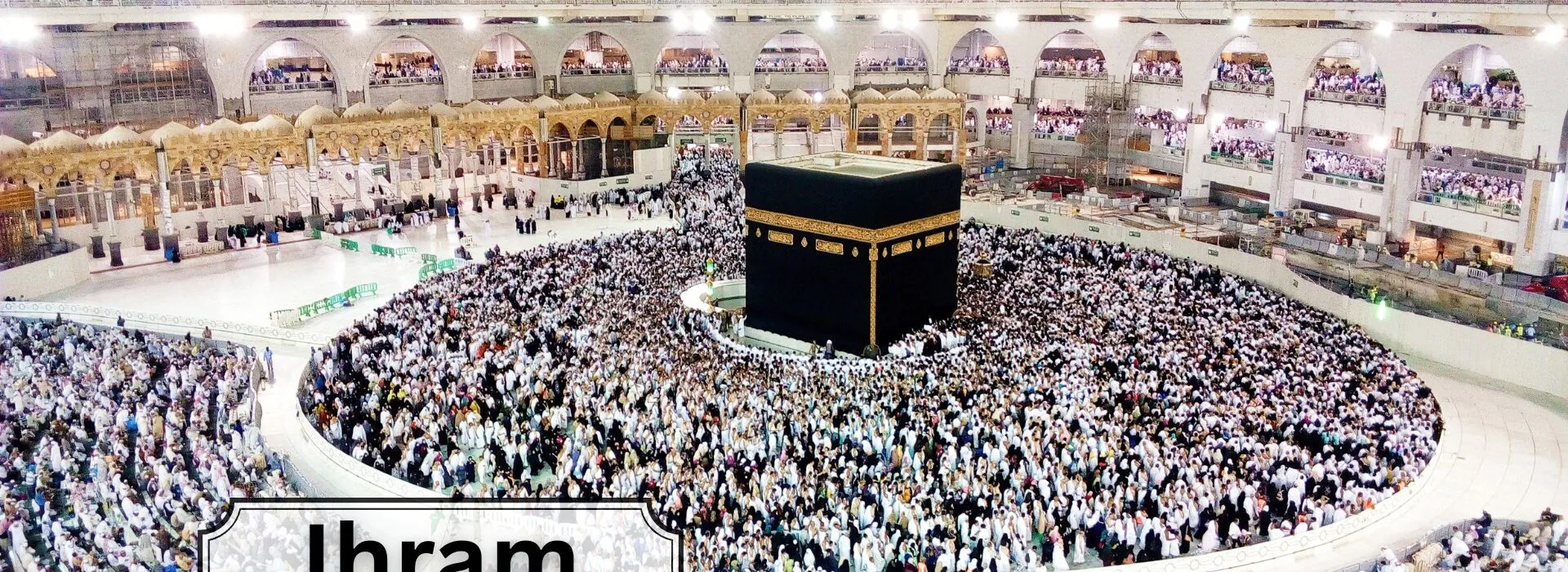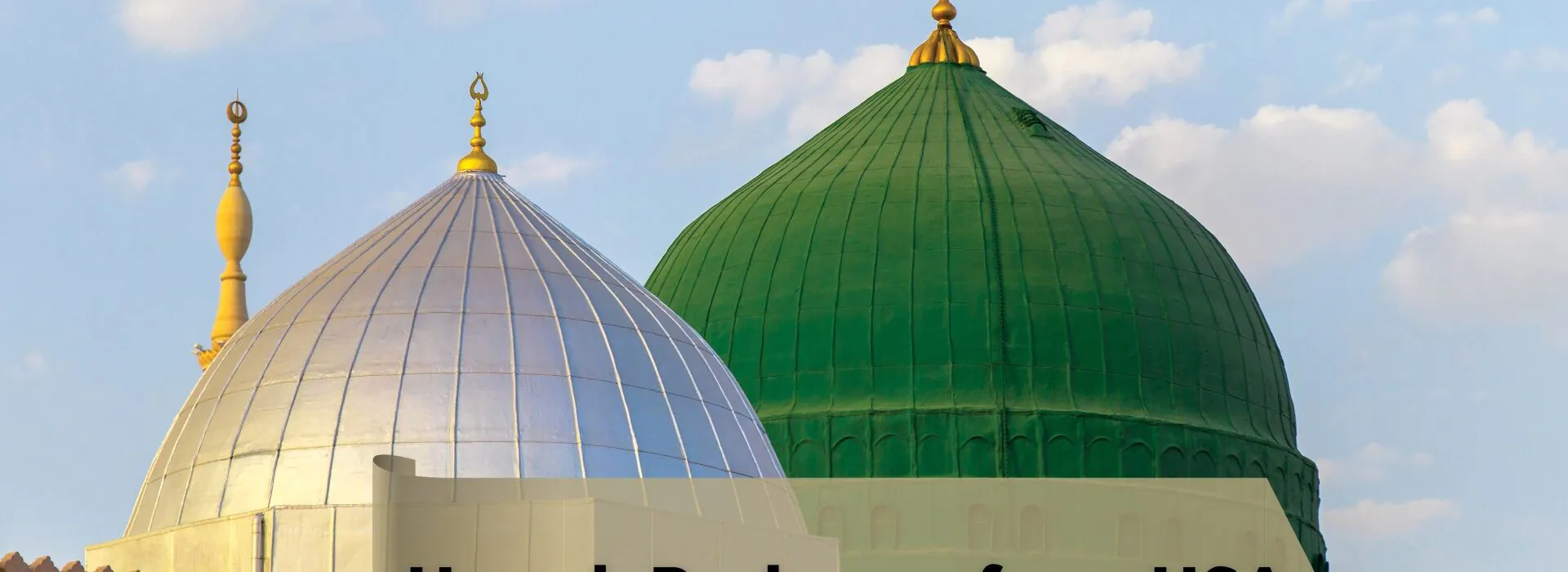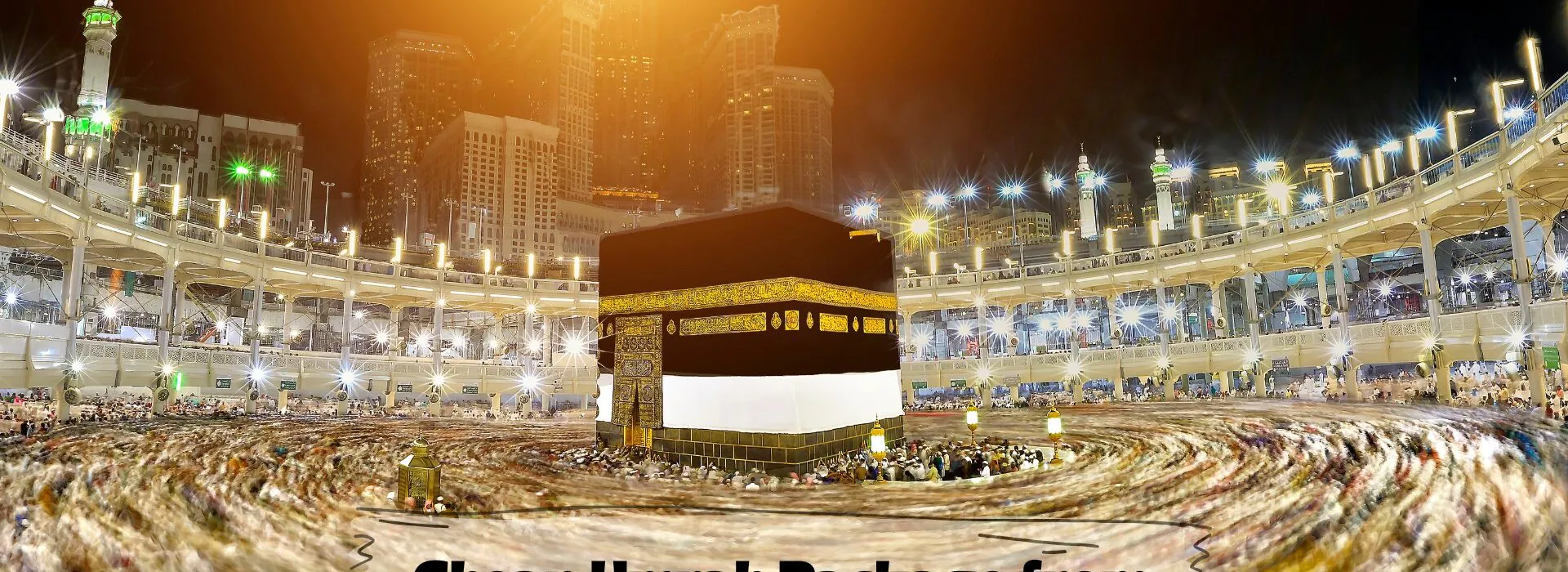Considerable spiritual shift is experienced by millions of Muslims who are preparing to visit Hajj or Umrah when they enter ihram state. This religious condition entails physical training and spiritual dedication, making the normal travelling experience an extremely significant pilgrimage. Whether this will be your first pilgrimage or you will be visiting to get a better insight into the pilgrimage, understanding the meaning and demands of ihram will make sure that you give this enlightening pilgrimage due reverence and preparation.
Ihram is not only about the clothes that one wears during pilgrimage. It includes spiritual purity and devotion which pilgrims have to attain prior to performing Hajj or Umrah ritual. This name is an Arabic name that has its root word as h-r-m, which means sanctity and prohibition. As pilgrims moves ihram, they undertake certain restrictions of behaviors and dress-codes which represent equality before Allah, humble attitude and total concentration on worship.
Everyone who intends to make such holy trips must have an idea of ihram. The norms, practices and meaning of this practice have changed little since the era of Prophet Muhammad (peace be upon him), and the modern pilgrims are tied to the centuries of Islamic culture.
What Does Ihram Mean?
Ihram is the initial destination of every Hajj and Umrah trip, including those booked through Umrah Packages. It means that a pilgrim willingly (niyyah) wants to perform these forms of worship and will not engage in certain earthly practices. This condition needs to be arrived within or before certain limits referred to as miqat that may differ with respect to the approach of the pilgrim towards Makkah
The physical dimension of ihram is the wearing of plain, unstitched white clothes amongst men and modest clothes amongst women. These clothes remove visible differences of affluence, position or nationality. There is no difference between rich and poor, young and old, they are all equal before Allah in ihram.
In addition to the clothing, ihram puts behavioral limit. Pilgrims should not argue, commit violence, cut hair or nails, use perfume, kill animals (other than harmful ones) and have marital sex. These taboos aid pilgrims to be mindful of their religious mission and to exercise self-control.
The Significance of Ihram in Islam
Ihram promotes a number of the major Islamic principles. First, it illustrates the idea of equality amongst all believers. As we all dress in identical plain clothing, there is no trace of worldly elements of prestige. A CEO is standing next to a worker both wearing the same clothes, both the same before their creator.
Second, ihram is a doctrine of disciplineness and concentration. The restrictions are to remind the pilgrims that they should be aware of their actions and intentions. Any ihram is spiritual discipline.
Third, ihram garments are very easy to wear and this reminds of the ultimate return to Allah. There are white shrouds that are similar to the burial garments reminding pilgrims about their mortality and the necessity to focus on what is really important.
The Muslims are also associated with their rich heritage through the practice. Most of the pilgrimage practices that are used today were founded by Prophet Ibrahim (Abraham) and his family. With an identical practice, the modern Muslims participate in an unbroken line of worship that goes back thousands of years.
How to Wear Ihram: Guidelines for Men and Women
For Men:
Male pilgrims have two white sleevesless garments. The bottom garment is known as the izar and covers the waist to reach the ankles. The rida is the upper garment, which is covered on the left shoulder and under the right arm and on the right shoulder is left open in some rituals.
The clothes must be clean and it would be best to wear white cotton or terry cloth. The heads of men are not covered, and the men wear plain sandals exposing the top of the foot. There is no stitched clothing which includes underwear but belts or pouches to carry items are allowed.
For Women:
The ihram of women is more relaxed. They ought to dress in simple ways such that they are not exposed on their face or hands. The outfits may be of any color, although most frequently women wear white or light outfits. Women have a headpiece on, a hijab or a scarf, as compared to men.
Women can wear ordinary and comfortable shoes and clothes. They can have their clothes sewn and designed in a manner that is modest and convenient. The major prerequisites include full body cover (except the face and hands) and modest look.
When and Where to Enter Ihram
When leaving the regions that are referred to as ihram, pilgrims are required to enter the state of ihram. These are boundaries of Makkah which are differently distanced and which miqat you can be according to depends upon where you are going:
- Dhul Hulayfah (Abyar Ali): For pilgrims coming from Madinah
- Al-Juhfah: For pilgrims from Syria, Egypt, or beyond
- Qarn al-Manazil: For pilgrims from Najd and the east
- Yalamlam: For pilgrims from Yemen and the south
- Dhat Irq: For pilgrims from Iraq
To passengers using airlines, the pilots usually declare when the aircraft is intersecting miqat, so that the passengers can then be ready. A lot of pilgrims prefer to head to ihram prior to flying on the plane without having a hard time of replacing clothes on the plane.
When traveling to Makkah with the aim of carrying out Hajj, residents of Makkah leave ihram at their homes. In the case of Umrah, they are allowed to visit one of the miqat or the closest boundary to the Haram.
Preparing for Ihram: Recommended Actions
Pilgrims are supposed to do a number of recommended things before entering ihram:
Personal Hygiene
Take a complete bath (ghusl), clip nails and depilitate undesired body hair. Males can deal with their mustaches and beards. Use perfume on the body (not ihram clothes) prior to making the declaration.
Prayer
Make two obligatory bows of prayer, ideally either at miqat or before the journey.
Intention (Niyyah)
Have a decision of what pilgrimage you are doing (Hajj, Umrah, or both). Express this intention by wearing the talbiyah.
The Talbiyah
The intention, say the talbiyah: Labbayka Allahumma labbayk, labbayk la sharika laka labbayk. Innal-hamda wan-ni mata la shani wal-mulk la sharike laka. (Here I am, O Allah, here I am. Here Here I am, You hast no fiance here I am. May her glory, her blessedness and royalty descend upon thee. You have no partner.)
You also should continue wearing the talbiyah throughout much of your pilgrimage and particularly on your approach to a place and on your departure there or even when you are praying.
Common Mistakes to Avoid
Numerous beginners in pilgrimage commit some avoidable mistakes as regards ihram:
Entering Ihram Too Late
There are pilgrims who enter ihram even after they have passed the miqat. This obliges them to revert to miqat or pay penalty (dam). Always make sure that you are at the correct miqat and make sure that you are ready well ahead of time.
Wearing Prohibited Items
Men defiantly wear stitched clothes, socks with ankle coverings or head covering. In some cases, women wear niqab on their faces. Check on the dressing code well in advance.
Using Scented Products
No scented soaps, deodorants or lotion should be applied after ihram. Carry odorless substitutes as long as you are on pilgrimage.
Breaking Restrictions Unknowingly
None of the pilgrims is informed about the information that there are taboo things such as hair and nails during ihram as well as killing of insects. Be aware of the restrictions.
Incorrect Talbiyah
Before you go on a trip, you should make sure that you acquire the correct pronunciation and meaning of the talbiyah. It is one of the primary points of your pilgrimage.
Tips for Comfort in Ihram
Their ihram, especially when they wear it over extended periods, is difficult especially during the times when there is a crowd and during a warm weather. These may come in handy by putting the following practical tips in place:
Choose Quality Fabric
Long loose and airy cotton or terry clothes that will not irritate the skin should be put on. Synthetic material should be avoided, which traps heat.
Practice at Home
Before traveling, men are supposed to wrap ihram. This assists in attaching them well and walk freely without the fear of falling over.
Bring Safety Pins
You should always have a few safety pins to hold the bottom and the top of the garments. This eliminates shameful wardrobe failures when tawaf or sai.
Pack Extra Sets
Carry with you not less than two sets ihram. Clean clothes will be necessary during all your pilgrimage and it is better to have some spares.
Stay Hydrated
This factor is the physical exertion, warm weather and crowds which may result in dehydration. Consume a lot of water and have rests when necessary.
Protect Your Feet
Men have no shyness in the sandals and the ones that they are expected to wear before the trip. Wear blister and foot care that are made of plastic.
Planning Your Pilgrimage with Crowne Travels
In Crowne Travels, we realize that it is not just about flights and hotels when it comes to preparing to travel to Hajj or Umrah. Our well trained staff also gives extensive advice on all aspects of your trip, such as specifics on ihram, what to bring and how to move through the rituals without being scared.
We are pilgrimage company that provides well planned pilgrimage packages that suit pilgrims of all levels of experience. You are either making your first Umrah or you are going back to visit the Holy Land and whatever the case, our services will see you enjoy the worship as we take care of the logistics.
The practical areas of our pre-departure orientations include how to enter ihram, how to perform rituals and how to deal with the most frequent challenges. We can offer you multilingual services during your trip and keep constant communication in 24/7 regarding the questions or concerns you have.
Beginning Your Spiritual Journey
Hajj Starting ihram is the start of one of the most significant spiritual experiences of Islam. Being somewhat complex at the beginning, the rules and requirements really have a gorgeous purpose: to deprive you of all the worldly concerns and make you concentrate solely on your relations with Allah.
All the elements of ihram including the plain white clothes and restrictions on the behaviour are very meaningful. Millions of pilgrims have been guided over fourteen centuries by these practices, and this does not mean that they are of the past but rather a wider experience that cuts across time, culture, and geography.
When you are well prepared you are able to accept this divine nature with faith and sincerity. You have time to get to know the needs, pack the proper clothes and materials, and go to your pilgrimage with an open heart and a humbled one. A thousand miles start with one step and to pilgrims, this step is into the dying state of ihram.
May your journey come true, may your prayers succeed, your pilgrimage be full of spiritual growth and the mercies of God.







